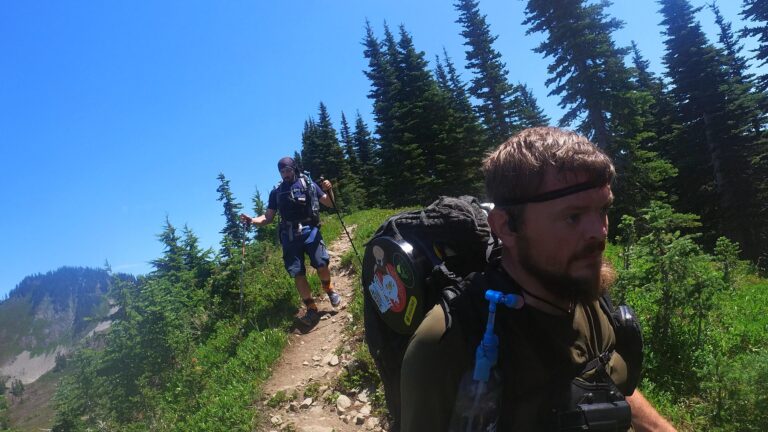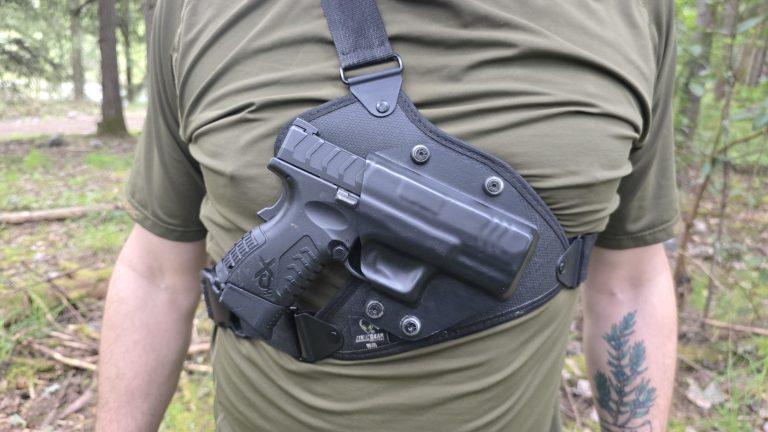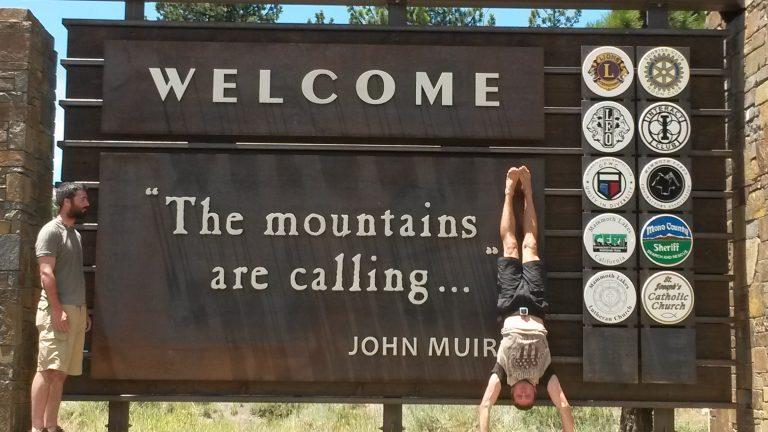Hiking is a beloved outdoor activity that allows people to connect with nature, explore breathtaking landscapes, and experience a sense of adventure. However, one concern that often arises when venturing into the wilderness is the possibility of encountering wild animals. While such encounters are relatively rare, understanding the odds of being attacked by a wild animal while hiking and what affects those odds is essential for ensuring safety and preparedness.
I think it’s important to start by emphasizing that the chances of a hiker being attacked by a wild animal are extremely low. The vast majority of wildlife prefers to avoid human contact and will typically flee when they sense human presence. Additionally, many wild animals are more scared of humans than humans are of them.
In this article, we are going to explore what people believe the biggest wild animal threats are and then see how it measures up to the facts.
Bears
Bear Attacks on Hikers
Although bears are a common concern for hikers, the statistical likelihood of being attacked by one while hiking is extremely low. The chances of being injured by a bear are approximately 1 in 2.1 million.
However, the risk is not zero. Bear attacks can occur if the animal feels threatened, surprised, or has become habituated to humans, particularly in areas where they associate people with food. Hikers in bear country should understand bear behavior, carry bear spray, and know how to react during an encounter to mitigate risk.
Bear Attack Statistics
In North America, there are an estimated 25,000–35,000 black bears and 60,000–70,000 brown bears. Despite these numbers, the chances of being injured by a bear are approximately 1 in 2.1 million.
| Bear Species | Bear Population(Estimate) | Recorded Attacks per Year(Average) |
|---|---|---|
| Black Bear | 25,000 – 35,000 | Less than 1 |
| Brown Bear | 60,000 – 70,000 | Less than 1 |
Factors Influencing Bear Encounters
- Location: Areas with high bear populations naturally have a higher risk of encounters.
- Time of Year: Bears are most active in spring and summer when they are looking for food.
- Food Storage: Improper food storage can attract bears to campsites and hiking areas.
- Hiking Alone: Solo hikers may be more vulnerable to bear encounters.
- Surprise Encounters: Surprising a bear at close range can trigger a defensive attack.
- Habituation: Bears become bolder when they have had lots of exposure to humans
Staying Safe in Bear Country
- Be Aware of Your Surroundings: Pay attention to signs of bears, i.e., scat, tracks, or overturned rocks.
- Make Noise: Talk loudly or sing to alert bears to your presence.
- Travel in Groups: Hiking with others can deter bears and provide help in case of an encounter.
- Store Food Properly: Use bear-resistant containers and store food away from your tent.
- Carry Bear Spray: Bear spray can be an effective deterrent in close encounters.
What to Do if a Grizzly Bear Charges
- Identify the type of charge:
- Defensive charge: The bear is trying to protect itself, its cubs, or its food. It may make loud noises, swat the ground, or appear agitated.
- Predatory charge: The bear sees you as prey and intends to attack. It will be quiet and focused, moving directly towards you.
- Stay calm and avoid sudden movements: Running or screaming may trigger the bear’s predatory instincts.
- Talk calmly and slowly: This can help the bear identify you as a human and not a threat.
- Stand your ground: Do not run. Running may trigger the bear’s chase instinct.
- Use bear spray: If you have bear spray, aim at a slightly downward angle at the bear’s face and spray in short bursts.
- Play dead: If the bear makes contact and the attack appears to be predatory, play dead by lying on your stomach with your hands clasped behind your neck and your legs spread wide. Protect your head and neck with your arms. Remain still and silent until you are sure the bear has left the area.
What to Do if a Black Bear Charges
- Don’t Run: Running can trigger a chase instinct in the bear. Stand your ground and try to appear large.
- Identify the Type of Charge:
- Bluff Charge: The bear may be trying to scare you. Stand your ground, make noise, and wave your arms.
- Predatory Charge: The bear intends to attack. Fight back with everything you have.
- Use Bear Spray: If you have bear spray, use it immediately. Aim for the bear’s face and spray in short bursts.
- Fight Back: If the bear attacks, fight back aggressively. Use any weapons you have, such as rocks, sticks, or your fists. Aim for the bear’s face and eyes.
Mountain Lions
Mountain Lion Attacks on Hikers
Mountain lions are often the next concern when hiking. Encounters with mountain lions are even rarer than with bears. These elusive predators typically avoid humans. They typically prefer smaller, easier prey to mitigate their own risk of injury. You have probably passed close to one of these large cats at some point while hiking and didn’t even know they were there. However, hikers should be aware of signs of mountain lion activity and know how to respond calmly if they encounter one.
Mountain Lion Attack Statistics
According to statistics, the chances of being attacked by a mountain lion are far lower than being struck by lightning or winning the lottery. In fact, the probability of a fatal mountain lion attack is estimated to be around 1 in 32 million.
| Region | Mountain Lion Population (Estimate) | Recorded Attacks per Year (Average) |
|---|---|---|
| Western US | ~30,000 | 1-2 |
| Southwestern US | ~6,000 | Less than 1 |
| Canada | ~4,000 | Less than 1 |
| Florida | ~200-250 | Less than 1 |
| Other Eastern States | Unknown, but likely low | Very rare |
Factors Influencing Mountain Lion Encounters
- Location: Mountain lion populations and human activity levels vary across regions. Areas with higher mountain lion densities and greater human presence in their habitat may experience a slightly elevated risk.
- Time of Day: Mountain lions are primarily nocturnal and crepuscular, meaning they are most active at dawn and dusk. Hiking during these times may increase the chance of encountering a mountain lion.
- Solo Hiking: Hiking alone can make you appear more vulnerable to a mountain lion.
- Small Children and Pets: Mountain lions may view small children and pets as prey.
- Running or Biking: Running or biking can trigger a mountain lion’s chase instinct.
Staying Safe in Mountain Lion Country
- Hike in Groups: Hiking with companions reduces your vulnerability and increases the noise level, which can deter mountain lions.
- Be Aware of Your Surroundings: Pay attention to signs of mountain lion activity, such as tracks, scat, or scratch marks.
- Make Noise: Talking loudly, singing, or clapping can alert mountain lions to your presence and prevent surprise encounters.
- Keep Children and Pets Close: Supervise children closely and keep pets on a leash.
- Avoid Hiking at Dawn and Dusk: If possible, hike during daylight hours to minimize the risk of encountering a mountain lion.
- Carry Bear Spray: Bear spray can be an effective deterrent against mountain lion attacks.
- If You Encounter a Mountain Lion: Do not run. Make yourself appear large, maintain eye contact, and back away slowly. If attacked, fight back aggressively.
What to Do if a Mountain Lion Charges
- Don’t Run: Running may trigger the mountain lion’s instinct to chase and attack. Stand your ground and face the lion.
- Make Yourself Big: Raise your arms, open your jacket, and wave them slowly. Make yourself appear as large and intimidating as possible.
- Make Noise: Yell, scream, and make loud noises to scare the mountain lion.
- Fight Back: If the mountain lion attacks, fight back aggressively. Use rocks, sticks, or anything you can find as a weapon. Aim for the eyes and nose.
- Protect Your Head and Neck: If you are knocked down, curl into a ball and protect your head and neck.
Moose
Moose Attacks on Hikers
While we’re spending our time worried about encounters with bears and mountain lions, there is another dangerous animal who Kills 10-15 times more people a year than both those predators combined. That animal is the good ol North American Moose. Yes, those seemingly docile, long-legged herbivores pose a greater threat to humans than most predators.
Moose Population and Attack Statistics
Moose attacks are uncommon, but more common than bear attacks. Moose are more likely to injure people than bears because of their large numbers near populated areas. Another contributing factor may be increased aggression during the rut(mating season). In Alaska alone, as many as 10 moose attacks on humans are reported each year.
| Region | Moose Population (Estimated) | Moose Attacks per Year (Estimated) |
|---|---|---|
| Alaska | 175,000 – 200,000 | 5-10 |
| Canada | 900,000 – 1,000,000 | 10-20 |
| United States (Lower 48) | 100,000 – 115,000 | 2-5 |
| Total | ~1,175,000 – 1,315,000 | ~20-35 |
Factors Influencing Moose Encounters
- Feeling Threatened: Moose are protective of their young and territory. Approaching a moose, especially a cow with a calf, can be perceived as a threat.
- Surprise Encounters: Moose can be surprisingly fast and agile. If startled, they may charge or kick in defense.
- Habituation: Moose that have become accustomed to human presence may lose their fear and become aggressive if they feel entitled to food or space.
Staying Safe in Moose Country
The best way to avoid a moose attack is to prevent encounters in the first place:
- Maintain Distance: Always observe moose from a safe distance, at least 50 yards away.
- Be Aware of Surroundings: When hiking or camping in moose territory, be alert for signs of moose presence, such as tracks or droppings.
- Avoid Surprising Moose: Make noise while hiking to avoid startling a moose.
- Never Approach a Moose: Especially a cow with a calf.
- Respect Their Space: Do not feed moose or try to interact with them.
What to Do if a Moose Charges
- Run: Seek cover behind a large tree or rock.
- Play Dead: If knocked down, curl into a ball and protect your head.
- Do Not Fight Back: Fighting a moose will only escalate the situation.
Other Animal Attacks
There are a variety of other animals that attack hikers each year that most hikers don’t even consider. Below are the next top five animals that attack hikers every year. Bears and mountain lions do not even make the top 5.
| Rank | Animal | Estimated Number of Attacks per Year | Notes |
| 2 | Snakes | ~25 | Most bites occur when hikers accidentally step on or provoke a snake. While many snake species are venomous, fatalities are relatively uncommon thanks to advances in antivenom treatment. |
| 3 | Coyotes | ~5 | Attacks on humans are rare, usually involving small children or pets. Most attacks are defensive in nature or occur when coyotes are habituated to humans due to food availability. |
| 4 | Bees and Wasps | ~5 | While not typically aggressive, bees and wasps can sting if they feel threatened or their hive is disturbed. Severe allergic reactions to stings can be fatal. |
| 5 | Elk | ~2 | Attacks on humans are rare and usually occur when elk feel threatened or are protecting their young. Hikers should maintain a safe distance and avoid surprising elk. |
When you consider that millions of hikers hit the trails each year, the number of animal attacks is incredibly low. Additionally, adopting good preventative habits is the most effective way to stay safe in the backcountry.
However, you should still prepare yourself adequately in the event of an animal encounter, both with proper knowledge and proper tools. Stay safe out there, everyone.
-Epic




